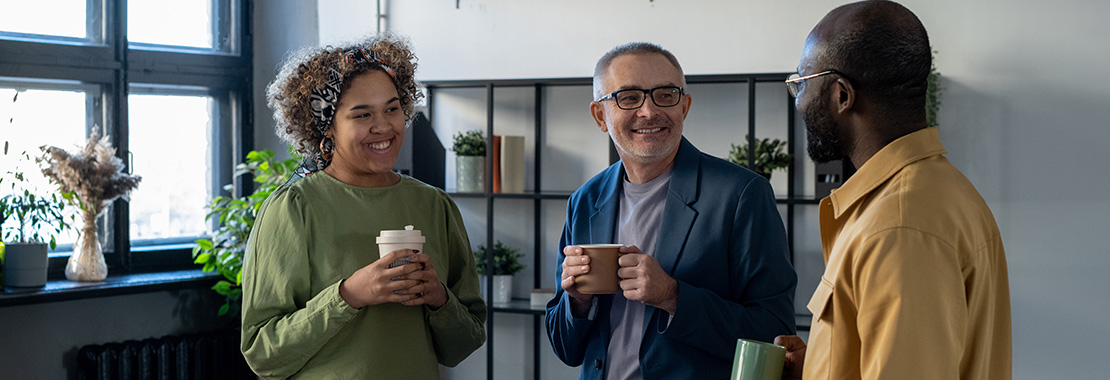Dr. Jewrell Rivers is a professor of Sociology, Marriage and Family and Criminal Justice at Abraham Baldwin Agricultural College
Traditionally, educators have focused on being more effective in the use of instructional pedagogy to improve student learning outcomes. As a result, the social and affective aspects of the classroom, including the student-teacher relationship, have been neglected by educators. Moreover, scientific studies are sparse and statistical analysis is lacking, which produces a significant gap in the research literature on student-teacher relationships.
Research on models or frameworks
Educational psychologists have begun examining the study of social relationships within educational settings and their influence on academic achievement. Of particular interest is the teacher-student relationship and how it’s a significant factor in enhancing student engagement and increasing achievement outcomes. Studies have found that the student-teacher relationship is related to high teacher expectations1, 2, class climate3 and motivation4 all of which can help facilitate higher achievement outcomes. Rubie-Davies incorporated these factors into a Social Psychology of the Classroom model as a framework for understanding the social and affective aspects of the classroom and the social-emotional component of the learning process.5 Additionally, Tormey developed a theoretical, multidimensional model of student-teacher affective relationships in higher education based on (1) affection/warmth; (2) attachment/safety; and (3) assertion/power.6
The significance of the teaching relationship
The teaching relationship entails a strong connection between student and teacher in which they jointly engage in the learning process. Teachers come alongside students to help them make meaningful connections to the course material through real-world experiences. Too often, instructional pedagogy has been the focus of improving student learning outcomes in the classroom. The teaching relationship emphasizes connection over content, motivation over method and process over product. To foster strong relationships, teachers must communicate effectively with their students, make meaningful connections in and out of the classroom and most of all, demonstrate genuine care in their interactions. It is important that students see their professors in diverse roles outside the classroom for further engagement in informal settings. Often, it is the informal conversations outside the classroom that build strong student-teacher relationships.
Building relationships in the classroom
As a Sociology professor, I have used a flipped classroom approach to provide more opportunities for relationship building and student/teacher and student/student interactions. To foster relationship building in the classroom, I use icebreakers, role-play simulation activities and interactive exercises. Below are some examples:
BINGO Icebreaker – an interactive gaming exercise used on the first day of class to provide students with the opportunity to discover common ground, make connections and build relationships as a learning community. Students exchange information about themselves, learn what they have in common and build relationships as they become familiar with one another.
Role-Play Simulation – a role-playing activity in which students learn to build collaboration based on resources that they bring to a community town hall meeting. As students take on designated roles and provide mutual support to address a social problem (e.g., childhood obesity), they build professional relationships that move the community toward a solution.
Mental Maps of Culture – a “warm-up” exercise designed to engage students in discussing the concept of culture. Students introduce themselves as they share their early encounters with diverse cultures. They learn about one another as they explore both their similarities and differences regarding their thoughts and feelings in encountering diverse cultural groups. Students can use their common experiences with culture to increase understanding of difference and build relationships.
Circles of Multicultural Self – a “warm-up” exercise designed to engage students in exploring how they self-define their identities and challenge stereotypes. Students are instructed to share stories in which they experienced both pride and pain when self-identifying with their racial or cultural group and their reactions to common stereotypes. Students can use their common experiences with the groups they self-identify with and dispel faulty stereotypes to increase understanding of difference and build relationships.
The big questions
In reflecting on how vital strong student-teacher relationships are, you should ask the following BIG questions:
- How important is the student-teacher relationship? How much do you prioritize building relationships with students?
- How does the student-teacher relationship contribute to learning outcomes?
- How have your relationships with students influenced your teaching pedagogy or instructional practice or vise-versa?
Sources:
1 “Becoming a High Expectation Teacher: Raising the Bar,” Rubie-Davies, C. M., London: Routledge (2014).
2 “Teacher Expectations and Beliefs: Influences on the Socioemotional Environment of the Classroom,” Rubie-Davies, C. M. & Peterson. Educational Psychology: Concepts, Research and Challenges, London: Routledge, p. 134-149 (2011).
3 “Can Instructional and Emotional Support in the First-grade Classroom Make a Difference for Children at Risk of School Failure?,” Hamre, B. K., & Pianta, R. C. Child Development 76: p. 949-967 (2005).
4 “Student Motivation in Middle School: The Role of Perceived Pedagogical Caring,” Wentzel, K. R. Journal of Educational Psychology 89: p. 411-419 (1997).
5 “Teaching relationships: broadening understandings through the social psychology of the classroom,” Rubie-Davies, Christine M. Knowledge Cultures, vol. 3, no. 2 p. 155 (Mar. 2015). Gale Academic OneFile. Accessed 10 Oct. 2022.
6 “Rethinking student-teacher relationships in higher education: a multidimensional approach,” Tormey, R. Higher Education, 82 (5), p. 993-1011 (2021).

